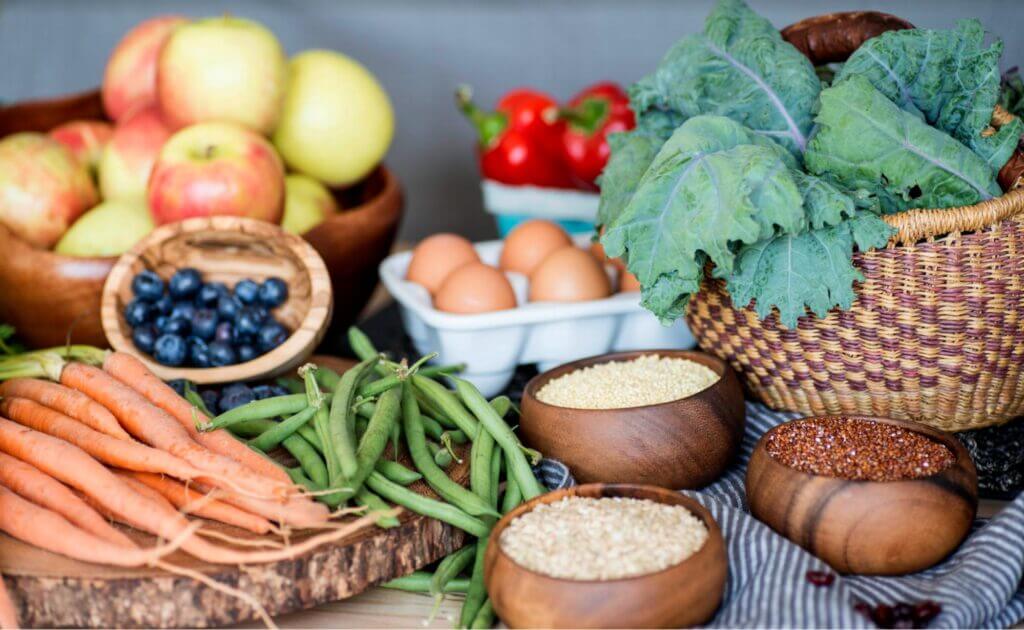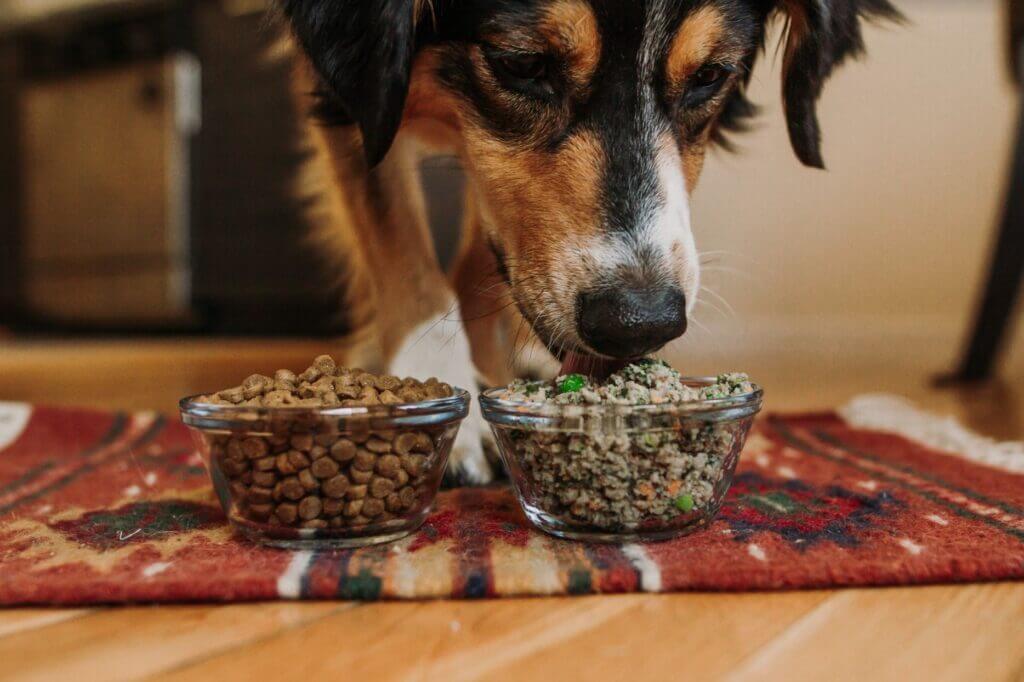For us humans, there are so many diets to choose from these days; vegan, paleo, Atkins, keto, gluten-free, lactose-free. And, as time goes on, there’s a lot of doggy diets to choose from too; fresh, fresh-dried, raw, commercial kibble, the list goes on! Animal nutritionist, Dr Susan Lauten, PhD, tells us everything we need to know when it comes to choosing your dog’s meal plan!
First of all, how does a dog’s diet compare to that of a human’s?
The difference lies in the macronutrient profile that dogs need. Dogs are basically carnivores, and thus require more protein than humans. A dog’s diet doesn’t typically focus on vegetables as much and is usually lower in carbohydrates. The fat content between a dog and a human’s diet is usually about the same.

I’ve always been told you are what you eat… how important is good nutrition for dogs?
Hugely important! A dog’s diet can drastically impact their quality of life.
Good nutrition is vital to support proper growth, organ function, physical maintenance and for run and play! In fact, data collected from a 12 year study by Purina showed that dogs who ate a leaner diet lived over 2 years longer than dogs who were overfed. Deficiencies in a dog’s diet can also lead to health problems related to digestion, bone and muscle development issues, and maybe even brain problems later on in life.
What are the most important things to consider when choosing your dog’s main source of food?
- Complete and balanced. Always look for this! If a diet is marked with this then you can rest assured that the food meets the high standards set by AAFCO (The Association of American Feed Control Officials). Additional supplements are not required for a complete and balanced dog food diet. Unfortunately, not all options on the market are complete and balanced dog food so proceed with caution!
- Quality of protein. As I mentioned earlier, protein makes up a huge part of a dog’s diet so it’s important that the protein comes from a high-quality meat source. Dogs can survive on plant-based protein but they won’t get nutrients as efficiently. Muscle meat is ideal as it’s a source of Taurine which is important for a healthy heart and optimal health.
- Price can be a good indicator of the quality of food. Good quality, complete and balanced dog food will often come at a higher price point. Unfortunately, there’s really no control of what goes into cheap foods. Inexpensive dog food may contain 4-D meat meaning the protein comes from dead, diseased, dying and disabled animals.
Got it, but are there differences to consider when choosing a diet for a puppy vs. an adult dog?
Yes, there are! A growing puppy’s diet is more calorically dense, and they also need more protein, more fat, and more vitamins and minerals. More salt is also required for all puppies.
So, as my dog grows, how do I know how many calories they need?
Puppies’ caloric needs increase steeply within their first year before levelling out. There is a formula that can be used to calculate your pup’s caloric intake taking into consideration their size, age and activity Level.
Though you can typically find caloric recommendations with commercial dog food, they’re often too high, leading to unwanted weight gain. Just remember, any caloric recommendation is just a suggestion and every dog is different. It’s always best to monitor your dog’s weight and behavior and consult your vet to find the right portion sizes!

‘Human-grade’ ingredients for pup’s are growing in popularity – what does this mean and should I consider it?
Yes, you should! When considering a human-grade diet, you should look for meals with whole-food ingredients that meet the standards set by USDA for human consumption. These diets differ from animal-grade foods, which as discussed earlier have a really low bar over what’s going into the food. Just remember, the better the ingredients, the healthier the dog…
How does a fresh diet differ from a raw diet?
| Fresh | Raw |
|
|

When switching to a new type of food, do I need to slowly transition my dog?
If your pup likes variety, you can definitely rotate between proteins! However, when completely switching your dog from one food type or brand to another, you should follow a 7-10 day transitionary period to allow them time to adjust to their new food and avoid an upset stomach.
| Day | Percentage of Old Food Vs. New Food (%) |
| 1-3 | 75 / 25 |
| 4-6 | 50 / 50 |
| 7-9 | 25 / 75 |
| 10 | 0 / 100 |
Thanks so much for clearing up the ins and outs of a dog’s diet, Dr Lauten. I’m ready to ditch the commercial kibble for something nutritionally stronger!




















